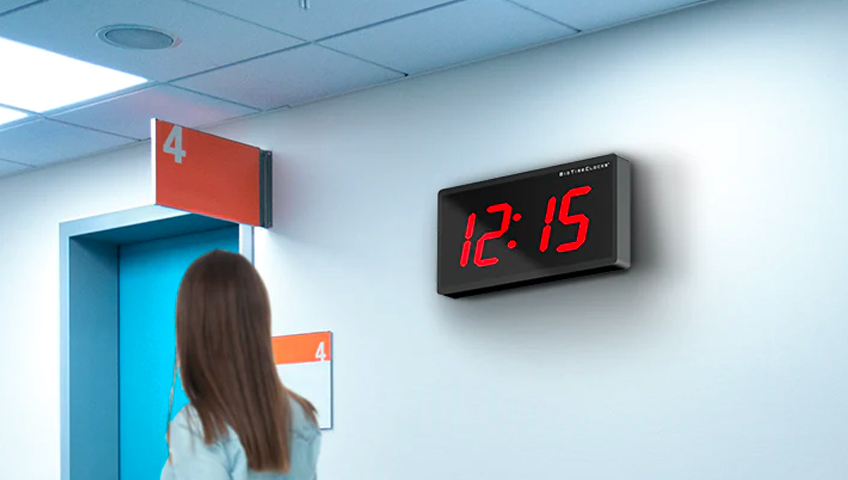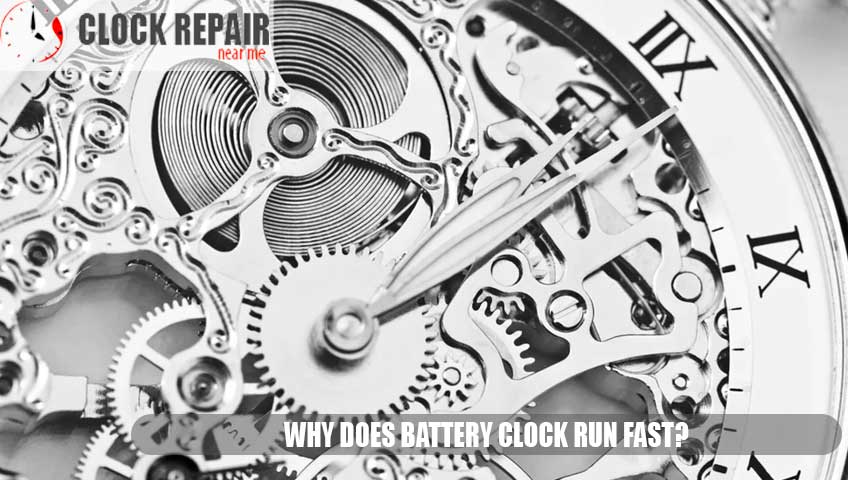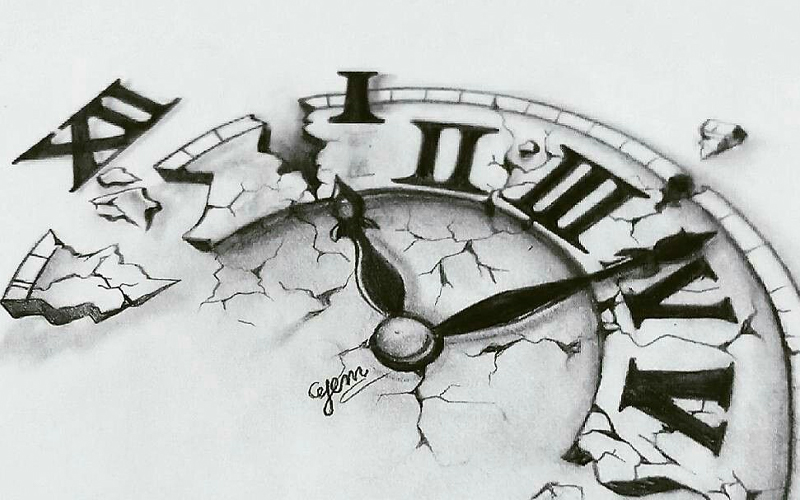Can you repair a quartz wall clock? 4 Steps As soon as most of our clocks had been wind-up gadgets, then we switched to electrical clocks that plug into {an electrical} outlet. Many watches as we speak are powered by a single AA cell battery. However the enemy of all clocks is mud and filth, which might simply catch the cogs and cease the mechanism from working.
On this information, I present you which of them elements you may strive cleansing to get your clock working once more. As clock repairman near me, we offer you reliable services.
Analog and Digital Clocks
Can you repair a quartz wall clock? The clock I repaired right here has an analog show. Nonetheless, the electronics that drive the show are digital and use an oscillator and counter chip for the frequency division. Take a look at my article to grasp the considerably complicated distinction between analog and digital, that are phrases that may imply various things relying on context.
How Does a Quartz Clock Work?
The mechanism (additionally known as motion) or working elements in a quartz battery clock is considerably less complicated than in a standard wind-up clock.
On the coronary heart of the clock is a quartz oscillator that pulses each second. An oscillator is a tool that frequently does one thing, equivalent to a pendulum swinging forwards and backwards, a vibrating tuning fork, a string on a guitar, or air in an organ pipe. These are all mechanical oscillators, however there are additionally digital oscillators.
An digital oscillator produces a voltage sign that repeats itself at a sure frequency. Within the case of the oscillator in a clock, this operates at a number of thousand hertz or cycles per second. An digital part known as a quartz crystal tunes the oscillator’s frequency to about 32768 Hz with a excessive diploma of accuracy. The frequency is cut up and lowered to 1Hz on the finish, or 1 cycle per second. The output of the oscillator drives an electromagnet, which strikes on a small magnetic rotor and turns it half a flip per second. The rotor has cog enamel that mesh with a string of different cogs, which ultimately turns the fingers of the clock.
The advantage of digital quartz oscillators is that their frequency may be very secure and doesn’t change a lot with temperature, humidity or different ambient situations, in contrast to mechanical clockwork. Which means that the battery clocks time properly and don’t achieve or lose minutes like a wind-up clock when the spring loosens or the temperature adjustments.
Why Do Clocks Cease?
- Unfastened or soiled battery connections
- low battery
- Battery ends aren’t lengthy sufficient
- Grime accrued within the mechanism inflicting extreme friction
First Steps: What to Do If A Clock Would not Work?
Change the battery. It will probably solely be straight. You possibly can test battery standing with a common battery tester like this one, appropriate for 1.5 volt AA, AAA, C and D cells, in addition to small, sq. 9 volt “PP3” (MN1604) fashion batteries.
Clear the connections and battery terminals with alcohol (isopropyl alcohol (IPA) or ethanol) on a cotton swab. Spring electrical strips can oxidize just like the ends of batteries. This oxidation typically seems as a grey or inexperienced coating. You need to use superb wire wool to take away it. If the battery has leaked and has left a white residue (potassium hydroxide from alkaline batteries), you may neutralize it by first rubbing it with vinegar.
Examine the battery terminals: Generally, the terminal pips on the batteries could also be just a little quick. Attempt barely bending the plus terminal strip on the clock. Consideration! These can break in case you bend them an excessive amount of.
Examine the fingers: Make it possible for the clock fingers aren’t rubbing in opposition to the clear cowl on the entrance of the clock.
Subsequent Steps: If the Clock Nonetheless Would not Work
If the clock nonetheless doesn’t work, the enamel or axles of the gears inside could also be soiled. Though there’s a cowl within the mechanism compartment, mud and mould can get inside in damp, soiled environments (for instance, within the toilet). So you’ll want to do some cleansing. The solenoid within the clock generates solely a small quantity of torque or rotational pressure to show the small rotor. Any filth on the pins of this rotor can generate sufficient friction to maintain it from turning.
How To Clear A Clockwork Mechanism
- Take away the duvet on the mechanism. This adjustments from hour to hour. There could also be tabs that have interaction the duvet within the mechanism compartment. On this case, gently push them apart with the tip of a screwdriver. Alternatively, there could also be pins that go into the duvet as within the picture beneath. I managed to pry the skinny hole between the compartment and the duvet with a small screwdriver and raise the duvet.
- Take away the rotor between the jaws of the solenoid and the primary pair of gears. These must be eliminated with none issue. The friction affecting these gears is prone to cease a clock as a result of additional down the gearset there might be extra torque to beat it. Take a photograph earlier than you’re taking it aside so you may put every thing again collectively.
- I’ve discovered that furnishings polish helps clear and lubricate the shaft ends the place the nylon gears match into the case and canopy. Spray some polish on a tissue or cotton swab and rub into the shaft ends and threads and wipe off the surplus.
- Take away any apparent mud or fluff from the motion.
- In case you take away a number of the gears, the fingers of the clock could fall off, so you might have to take away the clear entrance panel to exchange them.
Extra Doable Fixes
- Examine the voltage on the electromagnet: This could change polarity each second.
- Reflow the solder: You probably have a soldering iron, you may reflow the solder on the joints on the PCB. Generally a dry solder joint can stop the circuit from working or make it cease working intermittently.
- Examine the metallic strips: On some clocks, the circuit board presses in opposition to strips of metallic that provide energy from the battery. These strips are springy and press on tinned pads on the PCB. In a toilet, steam may cause corrosion at these factors of contact. Take away the PCB and clear the pads and spring contacts with IPA and superb wire wool.
- Examine the magnetic rotor axle: The axle of the magnetic rotor can tarnish if it is made from brass, making it tough and rising friction, inflicting it to stay. Dearer clocks and clocks have jewelled bearings (e.g., rubies) through which the tiny axles of the cogs rotate, nevertheless cheap quartz clock actions simply have a nylon plate into which all of the axles of the cogs match. You possibly can strive including a tiny drop of oil, (lower than the dimensions of the pinnacle of a pin) utilizing the tip of a pin or a pointed axe to the purpose the place the rotor axle matches into this plate.
If the Clock Nonetheless Will not Begin, Change the Mechanism
The actions are considerably non-standard, so you’ll want to test that the fingers are the precise measurement and match the fashion of your clock. Alternatively, if they’re flat rectangular sorts, you’ll want to test that they are often minimize and shortened. The diameter and size of the threaded half that enters the outlet on the face of the watch typically varies.
This must be lengthy sufficient in order that the rubber grommets to cease the mechanism from turning and the bracket hooks for securing to the wall will be changed with sufficient protruding elements to safe it in place with the retaining ring. The diameter is not that vital, nevertheless it must be sufficiently small to slot in the outlet. If it is too small, it is just a little tougher to maintain the mechanism correctly centered.




